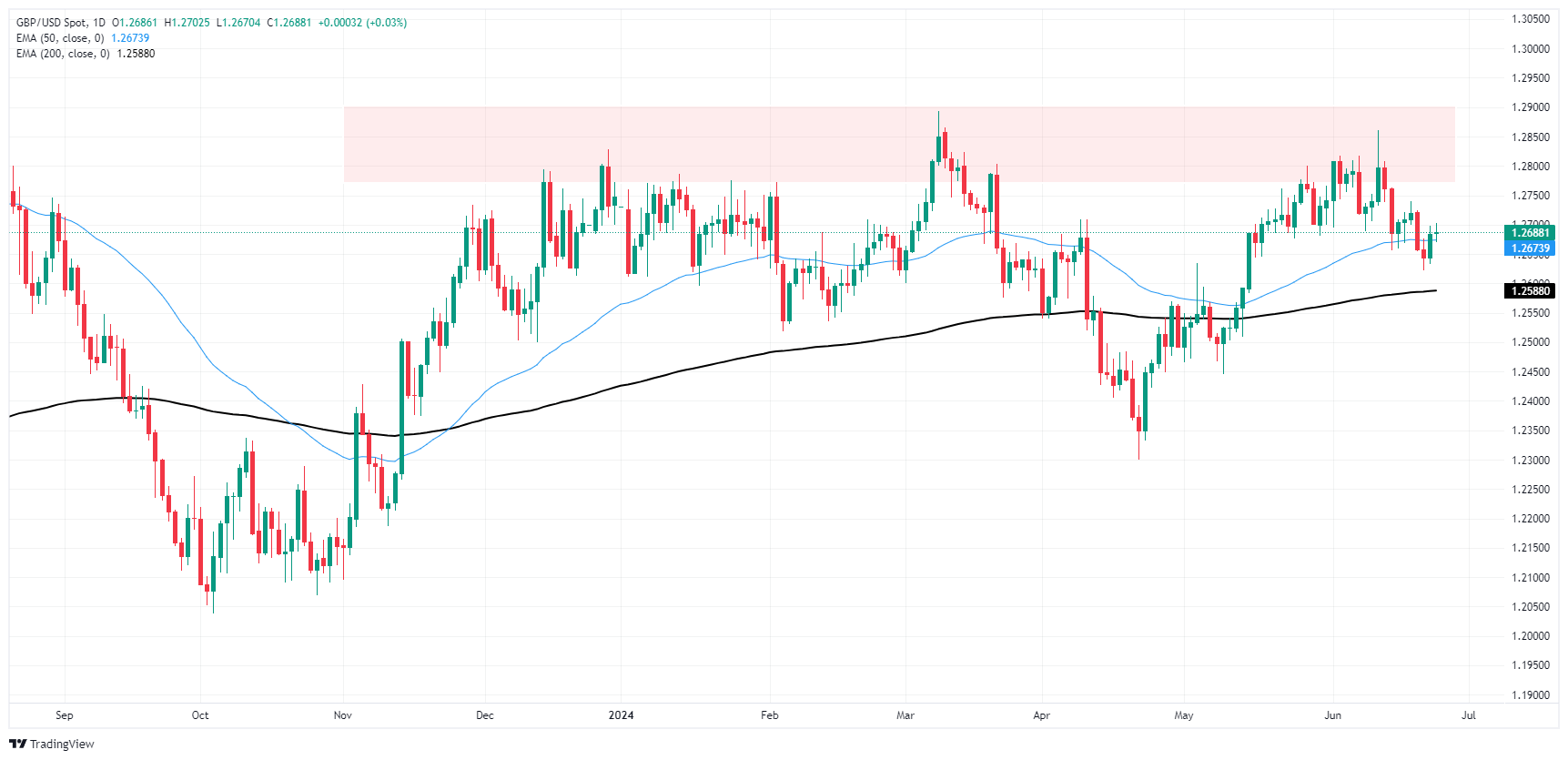- GBP/USD traded in a circle on Wednesday, trying to reach 1.2700.
- Key figures for both the United States and Britain are due in due course.
- Atlantic, GDP update on all sides of US PCE inflation due Friday.
GBP/USD took a hit on H2O on Tuesday as traders were generally forced to place market bets on both routes with the lack of significant records. With data-light on Wednesday for the mid-week market advisory, the pair moved into a sequential circle near 1.2700.
Forex Market These Days: The FX Universe Is Remaining at the Ready
Information was particularly sparse in Tuesday’s market advisory, with the United Kingdom absent from the knowledge docket and US records strictly mid-level. The Richmond Fed’s production index fell sharply to -10 in June, well below the prior print of 0 and completely missing the forecast of up to two. The CB Consumer Self-Assurance Survey index also edged lower again, but not as expected as the sentiment indicator dropped to 100.4 from 102.0 previously, but fell below the forecast 100.0.
Major record releases of the time will begin on Thursday with the storage facility of England’s (BoE) unedited financial balance document, followed by US strong product orders and US improved domestic product (GDP) revisions for the first quarter.
Trading hours will end on a different note with minimal impact on Friday with quarterly revisions of the United Kingdom’s personal GDP, followed by an unedited print of the United States’ personal consumption expenditure price index (PCE) inflation. As one of the inflation metrics supported by the Federal Reserve (Fed), when the Federal Reserve Market Committee (FOMC) meets, traders may look for a continued cooling in key US inflation data leading to lower primary charges in the future. Are. 18 September.
GBP/USD Technical Outlook
GBP/USD continues to lean towards the downside as near-term price momentum stalled at the 200-hour exponential moving average (EMA) near 1.2693. The hold of 1.2700 is proving too difficult to become an obstacle for bulls on the intraday charts, and a continued softening of the upward momentum could drag the pair to new July lows below 1.2630.
Daily candlesticks remain stuck in technical congestion at the 50-day EMA near 1.2673, and Cable continues to trade on the lower side of the supply zone with prices above 1.2800.
GBP/USD hourly chart
GBP/USD Daily Chart
Pound Sterling FAQ
The Pound Sterling (GBP) is the oldest foreign currency on Earth (886 AD) and the trusted currency of the UK. It is the fourth most traded unit for foreign exchange (FX) on Earth, accounting for 12% of all transactions, an average of $630 billion per week, in line with the record for 2022. Its main buying and selling pairs are GBP/USD, aka ‘cable’, which accounts for 11% of FX, GBP/JPY, or the ‘dragon’ as it is recognized by investors (3%), and EUR/GBP. 2%). The pound sterling is issued through the BoE.
The single most notable issue affecting the price of the pound sterling is the financial coverage set by England’s storage facility. The BoE bases its decisions on whether it has met its key goal of “price stability” – a sequential inflation rate of around 2%. Its number one means to achieve this is the adjustment of interest rates. When inflation is too high, the BOE will try to curb it by raising interest rates, making it more expensive for the community and companies to access credit scores. This is generally certain for GBP, as higher interest rates make the United Kingdom a more attractive playground for global investors to throw away their money. When inflation becomes very low it is a sign that economic expansion is slowing. In this situation, the BOE would consider cutting interest rates to lower credit scores so that companies can borrow additional to invest in growth-generating projects.
Information releases reveal the state of the economic system and will affect the price of the pound sterling. GDP, production and product and services PMI and office-related signals can all influence the path of GBP. A strong economic system is perfect for sterling. This not only attracts more foreign investment but it will also prompt the BOE to raise interest rates, which will immediately strengthen the GBP. Put another way, if financial records are sensitive, the pound sterling is at risk of falling.
Some other important records shed for the pound sterling are industry stability. This indicator measures the difference between what a country earns from its exports and how much it spends on imports over a certain period. If a country produces highly sought-after exports, its currency will benefit from differential demand from foreign patrons looking to buy those goods. Due to this fact, a good internet industry balance strengthens a foreign currency and vice versa for an unfavorable stability.
Discover more from news2source
Subscribe to get the latest posts sent to your email.




